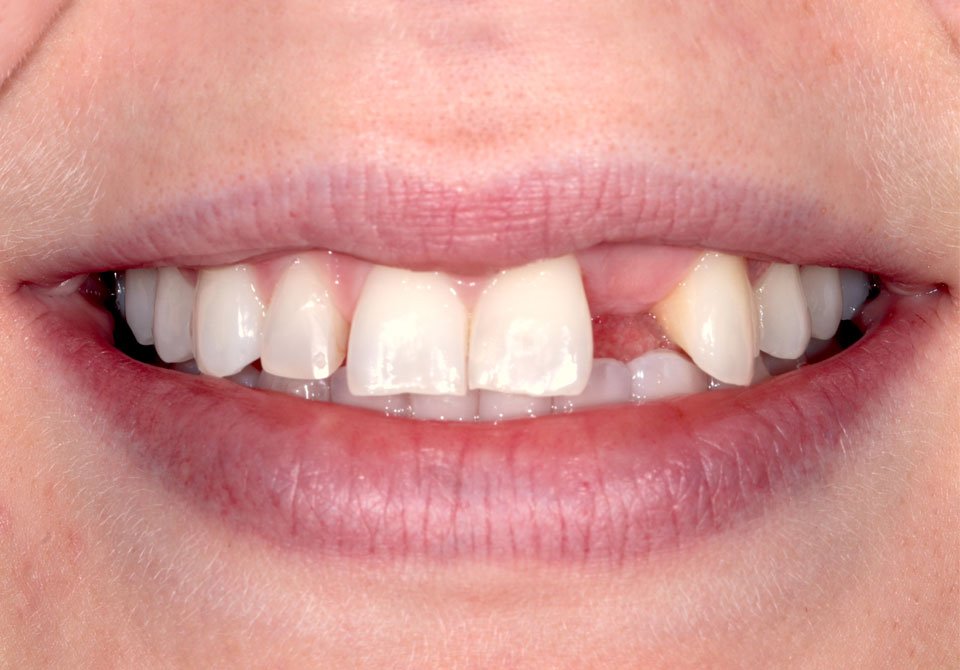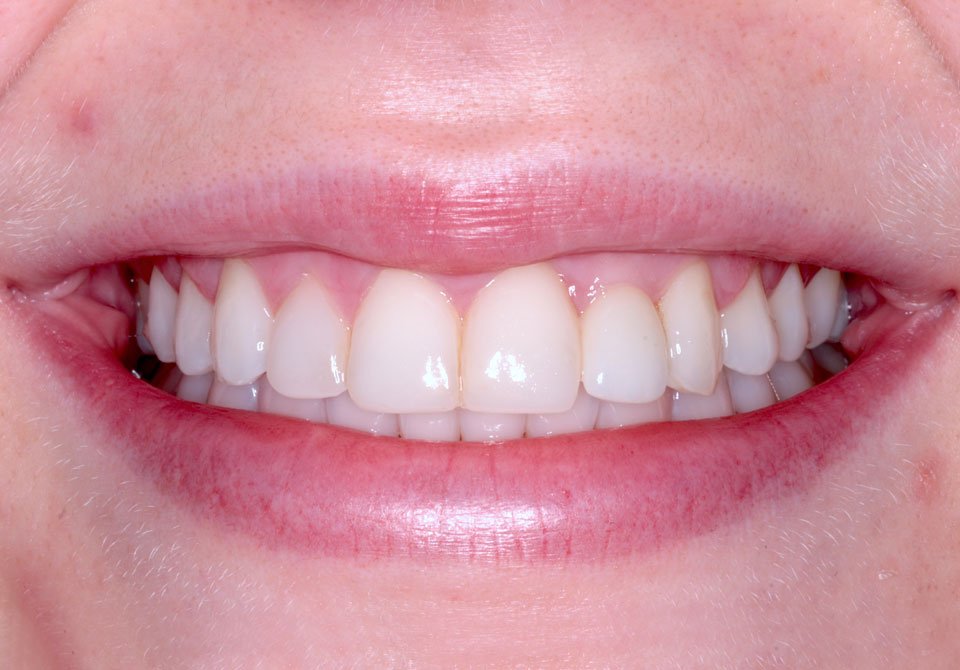Why should I have a bridge?
It is important to replace missing teeth, not just because having a gap in your smile can affect your confidence. A tooth supported bridge is cemented in place and cannot be taken out. Having a bridge fitted prevents your remaining teeth from moving out of their correct positions, causing alignment issues that could need costly orthodontic work in the future.
Bridges build back your smile and help you speak and chew properly again. They are more secure than dentures and provide protection to your otherwise vulnerable gums. Bridges can also be used with dental implants to give a truly secure and modern way to replace multiple teeth.
What does treatment involve?

Examination
We examine your teeth, making sure the teeth either side of the gap that will support the bridge are healthy, strong and suitable for treatment.
Preparation
We prepare these teeth for crowns by removing a layer of enamel. We take impressions of your teeth so your bridge can be custom made to fit comfortably and accurately. We fit a temporary bridge to protect your exposed teeth.
Fitting
When your bridge is ready, we check and adjust it to make sure it fits perfectly and fix it into place using strong dental adhesive.
Any questions?Treatment results


Before treatment
This patient was congenitally missing a front tooth.
After treatment
An adhesive bridge was fitted to fill the gap, with Invisalign, whitening and composite bonding used to completely transform the appearance of the patient’s smile.
Frequently asked questions
-
What material is in a Tooth Supported Bridge?
- Ceramic – most like a natural tooth in colour
- Gold Alloy – strongest and most conservative in its preparation
- Ceramic fused to an inner core of gold alloy – combining strength and aesthetics
-
What are the risks of having a Tooth Supported Bridge?
In having a bridge, some inherent risks exist both to the tooth and to the bridge itself. The risks to the remaining teeth are:
- Preparation for a bridge weakens tooth structure of the anchor teeth and permanently alters the teeth.
- Preparing for and placing a bridge can irritate the anchor teeth and cause “post-operative” sensitivity, which may last for up to 3 months.
- Anchor teeth for bridges may need root canal treatment about 6% of the time during the lifetime of the tooth.
- Anchor teeth may become mobile if there is bone loss around their roots. If the cement seal at the edge of the crown over an anchor tooth is lost, decay may form at the juncture of the crown and tooth.
The risks to the bridge are:
- Ceramic may chip and metal may wear over time.
- If a tooth needs a root canal treatment after the bridge is permanently cemented, the procedure may fracture the bridge and the bridge may need to be replaced.
- The longer the bridge, the shorter the lifespan; three tooth bridges last 10-15 years on average.
-
What are the alternatives to having a bridge?
Three alternatives to bridges exist:
- Replace the missing tooth with an implant
- Replace the missing tooth with a removable partial denture
- Leave the space as it is, which can cause alignment issues in your existing teeth
-
How can an existing bite affect a bridge?
- Excessive biting forces or untreated bite problems may lead to the anchor teeth breaking or loosening
- Excessive biting forces or untreated bite problems may lead to the bridge chipping, breaking or loosening
-
Are there any post-treatment limitations once I have a bridge?
- As a bridge is made in one solid piece, it is not possible to floss in between the teeth; special dental aids must be used to maintain the health of the anchor teeth and gums around the bridge
- Ceramic on the bridge may have a good colour match with adjacent natural teeth when the bridge is placed but less of a match as your natural teeth age
- Food may become lodged under fixed bridges; gum recession over time may make food impaction unavoidable, even with the most ideal bridge contour
- Gum recession may lead to unsightly dark roots or bridge margins becoming visible.
- A bridge may chip or break if used for abnormal activities (e.g., biting fishing line, sewing thread, or fingernails, opening bottles)
-
How do I look after my bridge?
The best way to look after your bridge is to keep up with a great oral hygiene routine, including brushing and flossing twice a day. It is also important to attend regular check ups with your dentist so they can keep an eye on both your bridge and the teeth supporting it.


